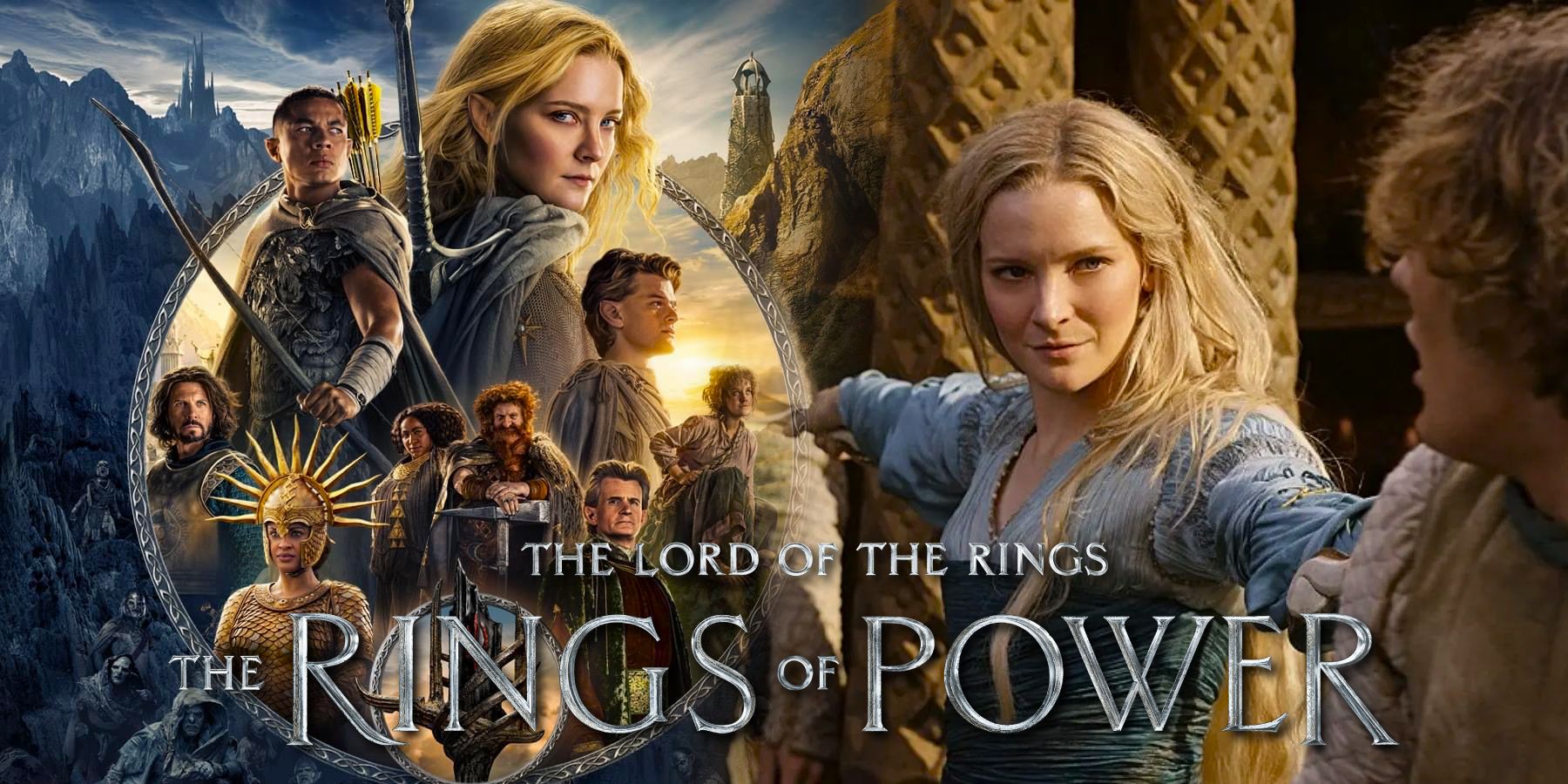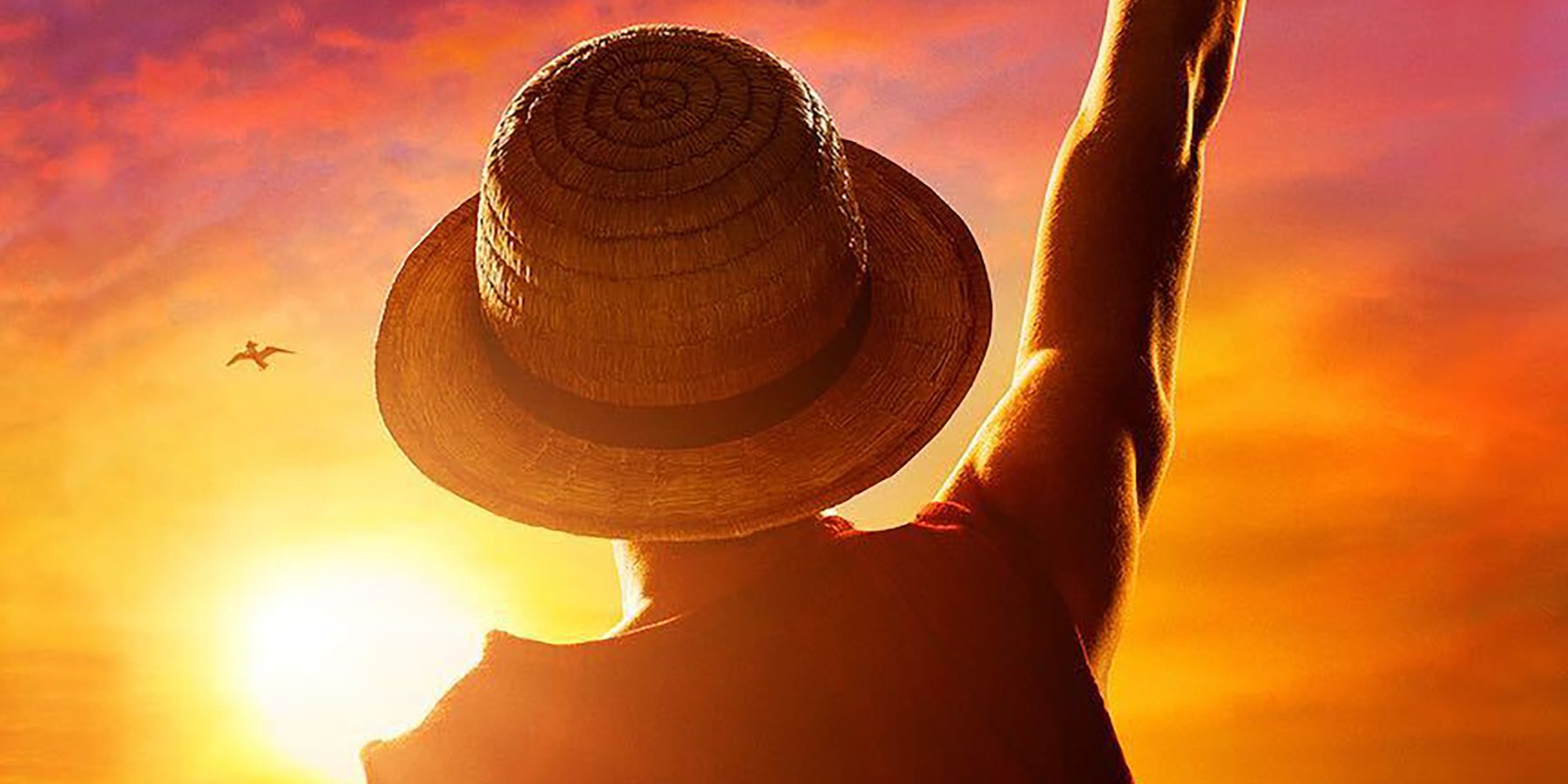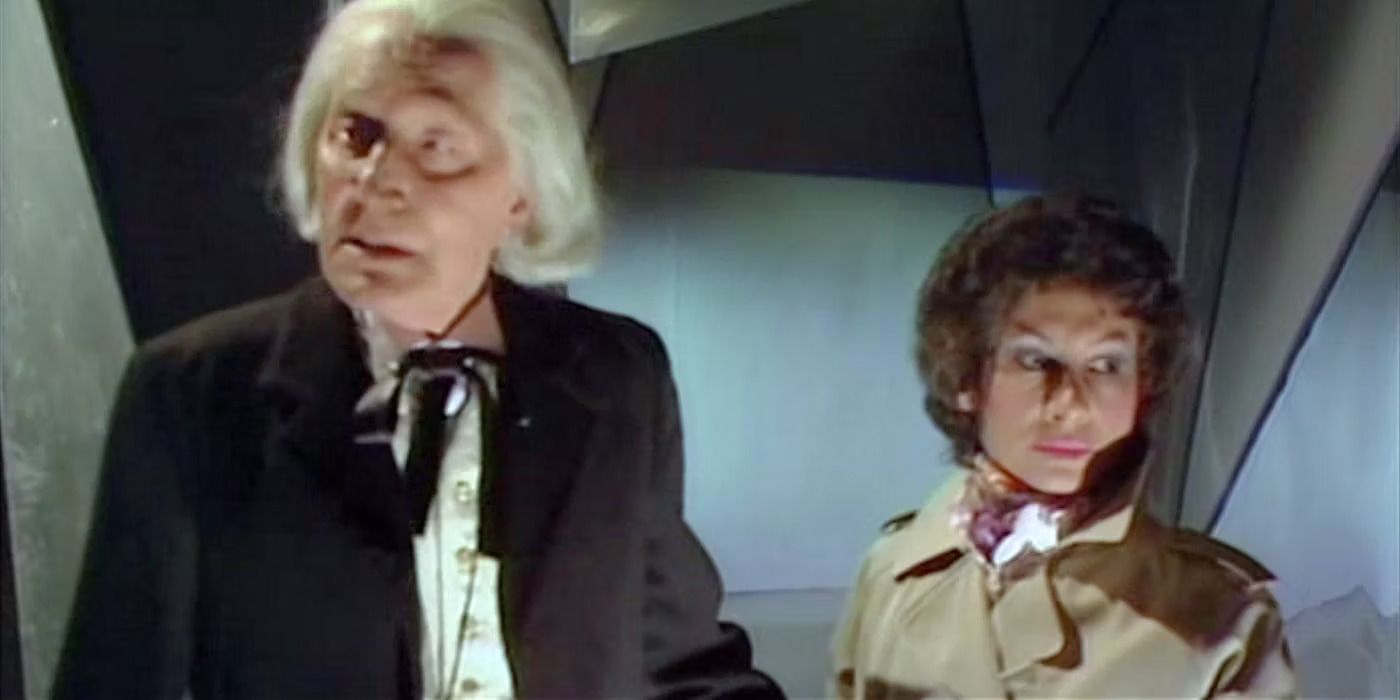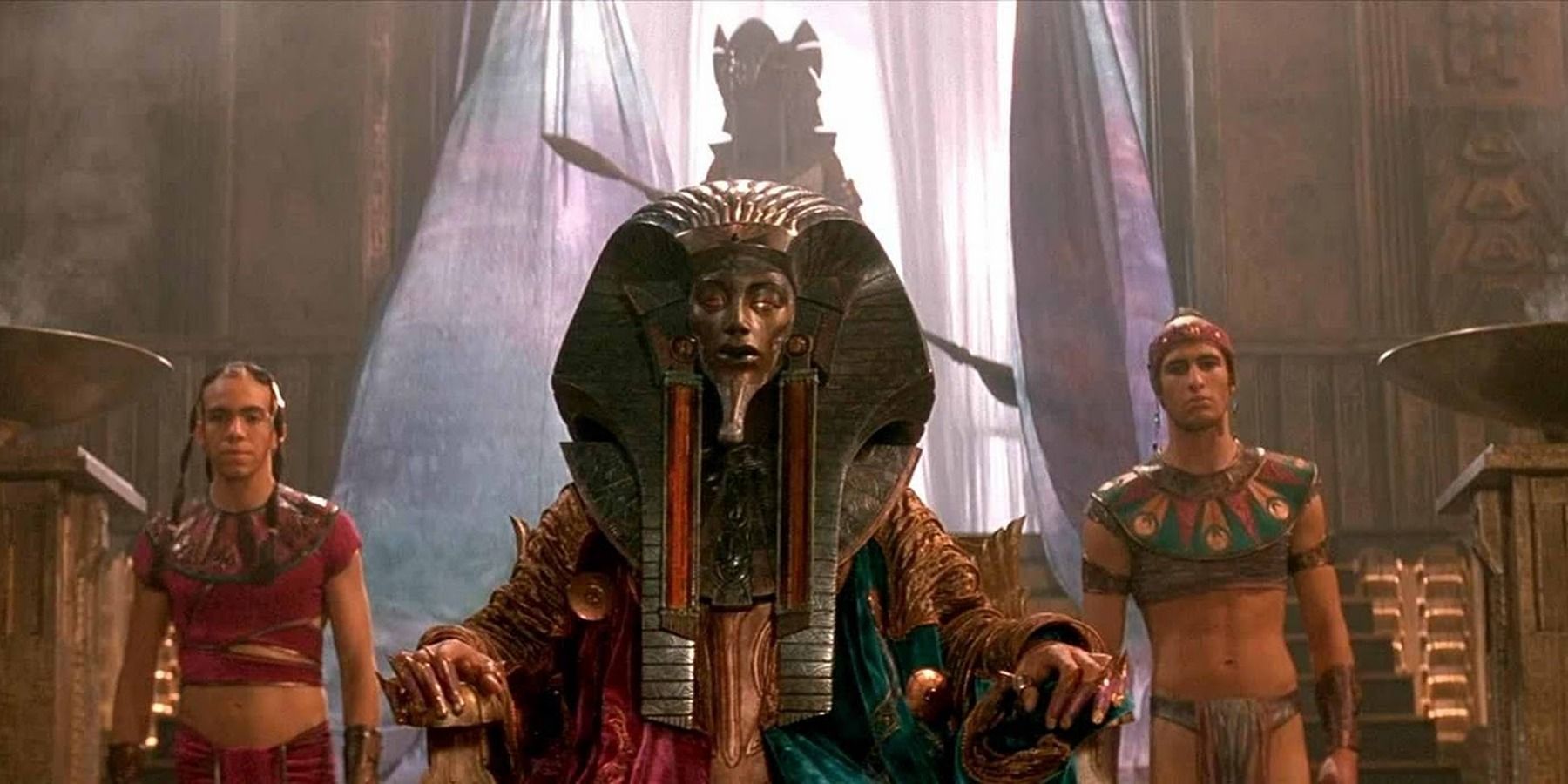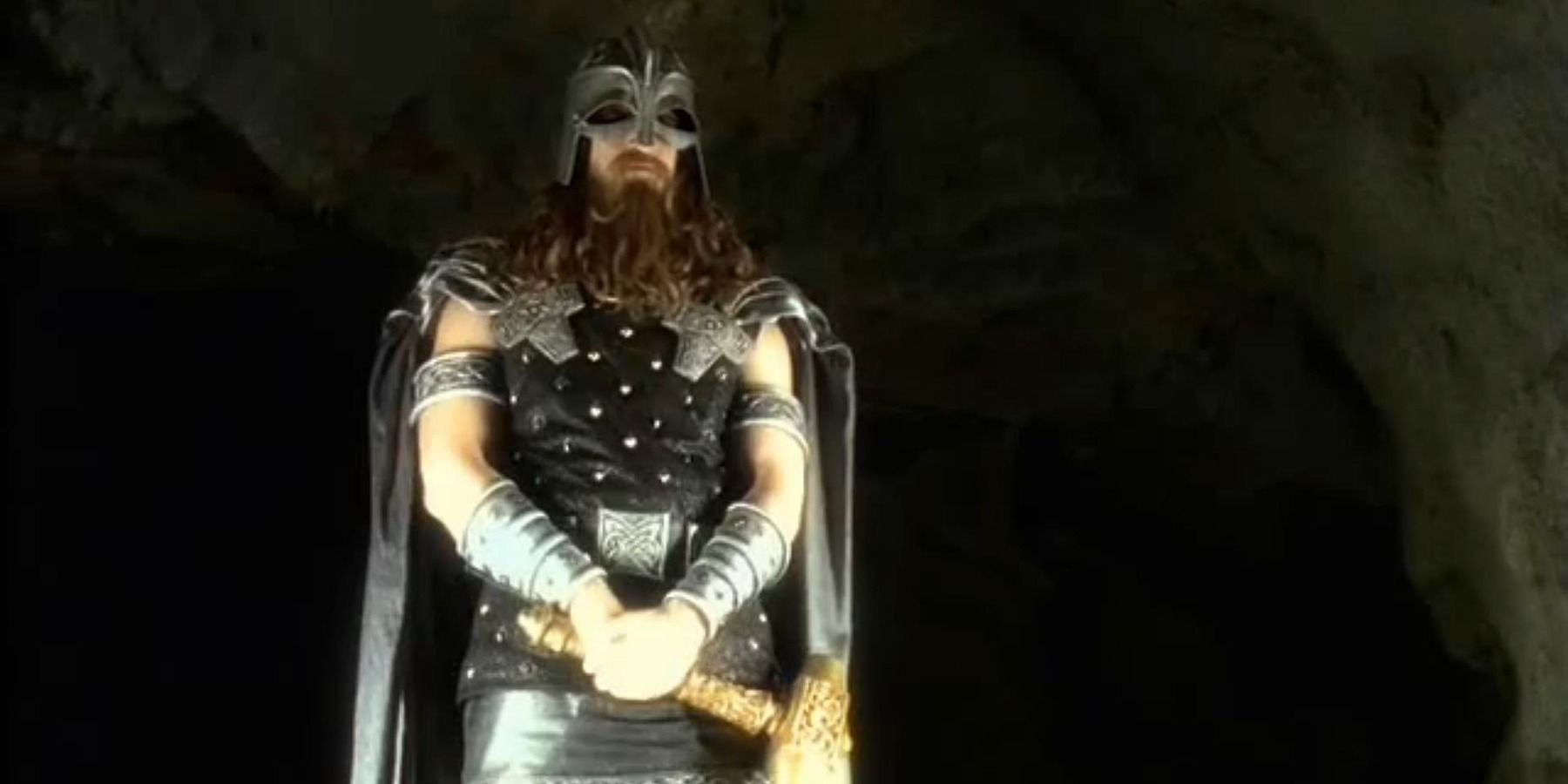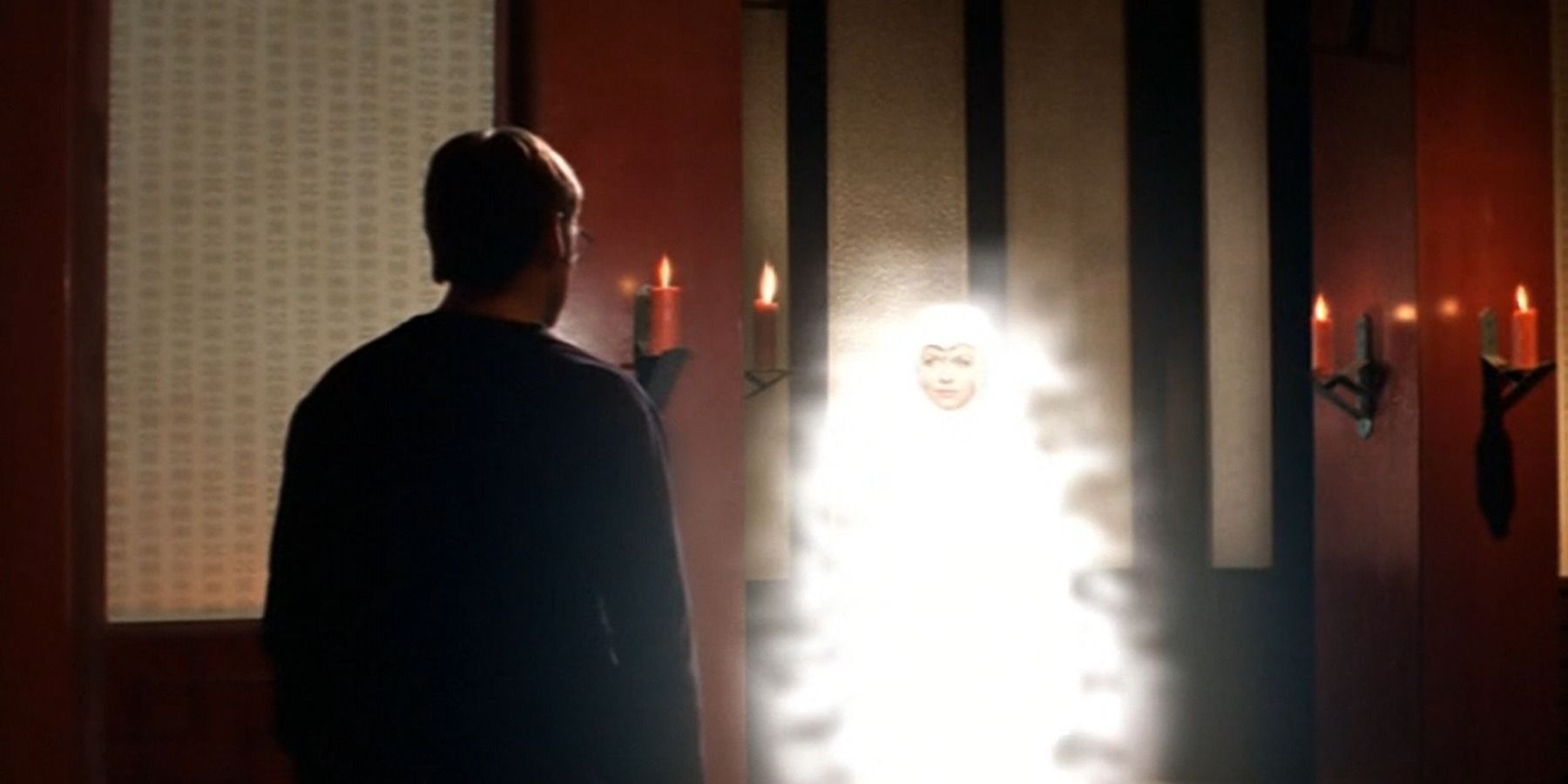One of the most prominent features of the Stargate franchise is its use of ancient mythology, with stories that take inspiration from multiple places around the globe. The original Stargate movie was based upon conspiracy theories about such tales – specifically, that the Ancient Egyptian pyramids were constructed by alien life forms. The ensuing shows and movies have expanded upon that approach to Earth's history, crediting alien technology in place of human imagination.
The earliest story arcs in Stargate SG-1 dealt with the Goa’uld, who piloted enormous ships shaped like pyramids. These parasitic aliens were explained as the original creators of Earth’s pyramids, just as the Asgard were understood to be the source for most of Norse mythology. In Stargate Atlantis, the Ancients (also known as Alterans) were the builders of the lost city of Atlantis, and Ancient ingenuity is forms the basis for Stargate Universe. There’s no shortage of familiar myths to be found in the Stargate franchise, even if they are transformed to fit sci-fi parameters.
The most identifiable part of Stargate’s canon is its employment of Ancient Egyptian mythology. In this universe, the Goa’uld are the source of Egyptian mythology on Earth, particularly the System Lord Ra. The Goa’uld made themselves known as gods to the humans they encountered, and knowledge of their exploits led to the creation of artifacts and literature depicting them. The System Lords that appear in SG-1 all have the names of mythological Egyptian gods: Ra, Anubis, Hathor, and Apep, among others. They fly ships resembling pyramids, write in hieroglyphs, and use technologically enhanced sarcophagi to heal themselves. The remnants of their Earth occupation aroused the interest of Egyptologist Dr. Daniel Jackson, who became an expert in Goa’uld culture.
In Stargate SG-1 season 1, episode 10, “Thor’s Hammer,” the members of SG-1 encounter the Asgard for the first time. The Asgard are a people who masquerade as gods on certain planets, using advanced technology to look human. They appear as gods in order to protect the human settlements they have encountered, populations that haven’t developed enough to protect themselves from the Goa’uld. Their visitation to Earth a millennium ago led to the birth of Norse mythology, and that belief system still exists on many planets.
Asgard such as Thor, Loki, and Heimdall are all scientists and leaders, with Thor demonstrating the strongest will to protect humanity. Loki, meanwhile, is somewhat of a rogue scientist, giving credence to how he is perceived as a trickster on Earth. They have the appearance of the quintessential ‘little gray aliens’ too, meaning they lurk even in modern human literature and storytelling.
The first hint of the Grecian legend of Atlantis was in season 7 of Stargate SG-1. A new command team is rapidly formed to head the expedition to Atlantis, which is not a lost Earth kingdom, but a city in a distant galaxy. It’s revealed to be a city-sized ship left over from the Ancients, a race of people who seeded multiple galaxies with human life. The spinoff series Stargate Atlantis takes place on this ship, which is submerged underwater when the team from Stargate Command first arrives on it. They realize that the migrating Ancients must have brought the legend of the city back to Earth, which explains its presence in human mythology. Many of the tales told in ancient societies on Earth end up being remnants of the Ancients, whose technology and culture shapes the way humans have developed.
The Ancients are the source of Arthurian mythology as well. These myths were first mentioned in Stargate SG-1, season 9, episode 1, “Avalon, Part One,” setting up a storyline that wouldn’t be resolved until the final Stargate movie, Stargate: The Ark of Truth. SG-1 discover the machinations of the Ancient being known as Merlin, who has spent millennia devising means of fighting the deadly Ori. The Ori are religious zealots, while Merlin was the wielder of technology so advanced that ancient human societies believed him to be a wizard.
The final two seasons of the show delve into Arthurian mythology: Merlin’s rival is an Ancient who gave rise to the story of Morgan le Fay; Merlin aided King Arthur with magic a thousand years ago. Camelot was a real city; Avalon was an Ancient repository; and the Sangraal, or ‘Holy Grail,’ was a hidden weapon designed to destroy the Ori.
The show touches on other forms of mythology, in addition to having entire stories built around Ancient Egyptian, Norse, Greek and Arthurian mythologies. The Ancients defer to a spiritual order that resembles Buddhism, while the Asgard have an offshoot of their race that invokes Roman legends. It reinforces the idea that in this universe, the most well-known stories have their roots in alien strangeness.
Within Stargate SG-1, mythology is given sincere weight, shedding light on the importance of taking art and literature seriously. Dr. Daniel Jackson, whose specialty lies in anthropology, archeology, and linguistics, is generally regarded as one of the most crucial members of the Stargate program – not only because of his academic knowledge, but because he pushed the idea that ancient myths are the key to understanding our place in the universe.

